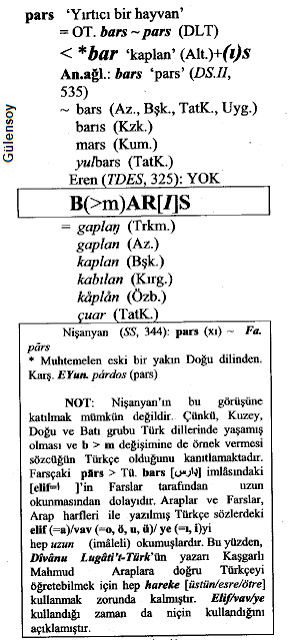ağız - aiš / išš (mouth)
Hitit yazıtlarındaki aiš / išš- (n.) 'ağız' [ve sözde Luvicede dedikleri aaš-] etimolojik olarak TÜRKÇE'dir ve ne Luvice, ne Hint-Avrupa, ne de PIE (Proto-Hint-Avrupa)'dır !
"Herkesi tatmin edecek bir tarihsel açıklama (aiš / išš- için) henüz mümkün görünmüyor" diyen Alwin Kloekhorst'a bir tavsiye:
Dil üzerine çalışırken Türkçeyi işin içine katmazsanız elbette sonuç alamazsınız ve dolayısıyla tatmin olmazsınız.
Lütfen profesör unvanına sahip olanlar da dahil olmak üzere, saygıyla andığınız, hocam dediğiniz, kitaplarını ya da makalelerini takip edip okuduğunuz bilim insanlarını sorgulayınız! Çünkü, "önyargılarla" yapılan işe bilim denilmez...
aiš / išš- (n.) ‘mouth’ in Hittite inscriptions [and aaš- in supposedly-Luwian] is TURKİSH of etymology, and neither Luwian nor İndo-European, nor PIE !
An advice to Alwin Kloekhorst (he concluded, "no historical account (of aiš / išš-) satisfying to everyone yet seems possible"):
If you do not include Turkish when working on the language, of course you will not get any results and therefore not satisfyed.
Please question the scientists, including those with the title of professor, whom you remember with respect and call your teacher, or whom you follow and read his books or articles! Because, the works which is done with "prejudices" cannot be called science...
SB
The only place where Kloekhorst mentions Turkish is at the word BARS (parşna in Hittite), which is also Turkish of etymology.
Türkçe / Turkish.
📚
Read also
Prof.Dr.Rukiye Akdoğan
FROM ANATOLIAN WORD HATTICE TABARNA TO IL-TEBER IN ANCIENT TURKIC PEOPLES - PDF
In the cuneiform texts from Kayseri-Kültepe, is seen that Hattian t/labarna, an Anatolian word, has been used with special names since the 1800 BC. Later, in the Old Hittite Age, the name Labarna / Tabarna continued as the tradition of naming the king (Labarna I, Hattušili I (= Labarna II)). labarna-/tabarna- as the title of the Hittite kings, was used to mean king, ruler. It is clear that the first syllable of t/labarna, which we think is derived from the Sumerian word TAB (double, double, double, two-part), has a double, dual meaning. The title Tabarna/Labarna was used only for the "great king of the Hatti country", and the emblem used for the Hittite kingdom is the ax, which is also the symbol of power. During the KI.LAM (market place) festival, it sometimes appears that the iron ax and the iron spear, as the symbol of the kingdom, are mentioned with the king as the symbol of the kingdom. Thus, it becomes evident that the ax and spear refer to "symbols of the kingdom". In the region extending as far as Southern Europe, the Middle East and India, two axes or double axes with a single handle appear as the known weapon and symbol of the powers. In ancient times, it seems that the labrys (double-mouthed axe) was used in religious ceremonies or presented to the gods as a votive stuff. Among the old Turkish titles before Islam, the title of İl-teber (administrator of the province / ruler of the province) appeared in the inscriptions as the title of the Uyghur and Karluk chiefs. All these are very important in terms of indicating the historical journey of the Hattic t/labarna "ruler title" from the Hittites to İl-teber in the ancient Turkic Peoples. (2022)




